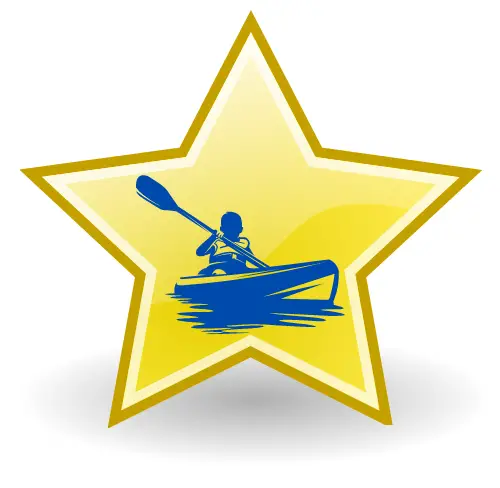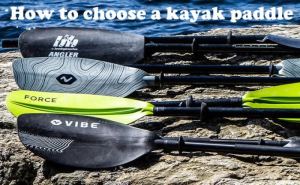A kayak paddle is the most personal piece of equipment you own as a kayaker. Not only your movement through the water but also your maneuverability depends on the paddle.
So, to make sure you make the right choice and can rely on it during your next outing, I have prepared for you an article on how to choose a kayak paddle and not to get confused about your choice.
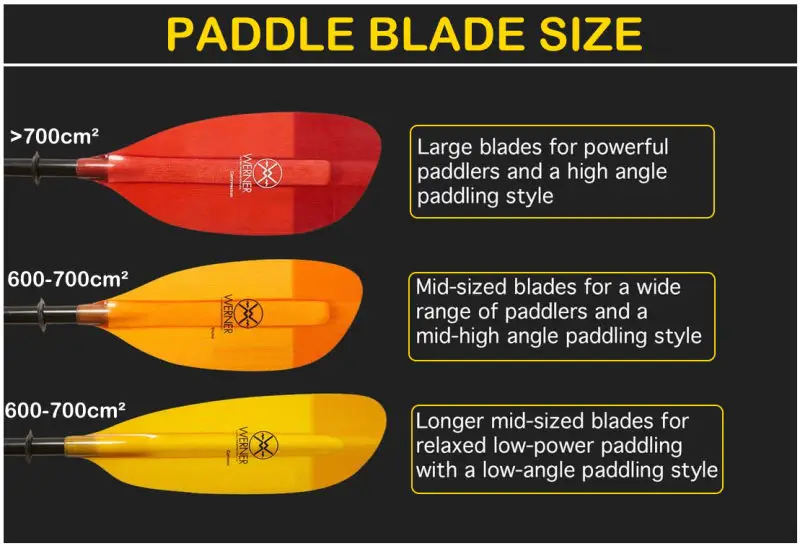
Kayak paddles are available in a wide range of shapes and sizes, making it challenging to choose one. There are many sizes, materials, and blade shapes available for blades. The key to finding what you’re looking for is to understand what you’re trying to find. A reliable, double-bladed kayak paddle can be your reliable companion. Here are some tips to help you choose one.
Table of Contents
Kayak Oars, Kayak Palles
The terms paddles and oars can often be confused. For those unfamiliar with the sport, angle paddling may be mistakenly called “kayak oars”. This is because it can be confusing to explain to others what kind of water sport you’re participating in.
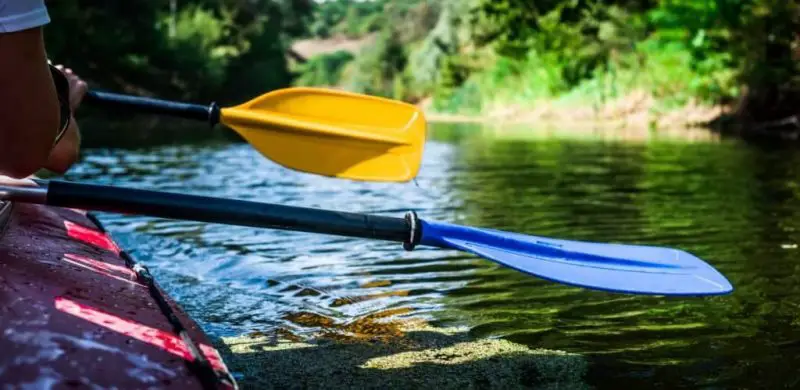
Oars can be seen on a rowboat as they are used for rowing. Oars only have one blade, and a section of the shaft rests against the side of a boat in what are often half-ring-shaped devices, known as an “oarlock”. While pulling the oar through water, the rower holds onto one end. Other types of boats, like rafts and schooners, can be equipped with oarlocks for use with oars. If you are looking to buy oars, they can be found on amazon.
Last update on 2024-04-16 / Affiliate links / Images from Amazon Product Advertising API
Kayak paddles have the same shaft that an oar has, but the best kayak paddle is equipped with asymmetrical blades at both ends. These blades are located near the shaft where each feathered paddle blade meets. Angle paddling does not attach to the boat. Instead, the paddle is guided through the water by you using your arms and your body. Kayak paddles were designed for paddling.
Kayak Paddle Size Chart
In choosing the right kayak paddle, length is a key factor in your decision. The length you choose is determined by three factors:
- Your height
- The size of your kayak’s width
- Type of kayaking you’ll be doing
What happens to your kayak paddle length if it isn’t right?
If your kayak paddle is too small, you’ll bang on the kayak sideways and have difficulty getting to the water with the paddle lengths.
Low angle paddling with too much length can lead to other problems. A longer kayak paddle sizing is heavier. A longer paddle is more dangerous because it puts you under greater strain. If your paddle is too long for your kayak, your strokes might be farther from the boat. This could cause you to zigzag rather than travel straight.
Here’s a chart of kayak paddle sizing to help you choose the right length for your boat based on height and width.
Adult whitewater paddle sizing Guide
| Paddler Height | Paddle Length |
| UNDER 5’2″ | 192 cm |
| 5’2″ – 5’7″ | 194 cm |
| 5’8″ – 5’11” | 196 cm |
| 6’0″ – 6’3″ | 198 cm |
| OVER 6’3″ | 200 cm |
As you gain more experience in paddling, you’ll be able to adjust the length of your kayak paddle size chart. The chart however is a great place to start.
What Paddle Category is Right Now?
The task of picking a paddle can seem daunting but it doesn’t have to be.
It’s easy to narrow down your choices by deciding which category, performance, touring, rec, or whitewater, best matches your paddling lifestyle.
Long-term trips on flat or moving waters, including sea tour
If you spend a lot of time on the water, you should consider touring kayak paddles as well as low-angle paddles. The paddles get lighter as you get higher. As a result, the paddle becomes lighter, resulting in less joint strain and fatigue overall.
Many kayakers choose a stiff paddle with a carbon shaft that reduces weight. A carbon shaft can also be used with fiberglass or compression carbon paddles. They are light and stiff enough to give you more power with each paddle.
Experts recommend using lightweight paddles with fiberglass or carbon composite paddles for long trips and paddlers with bad shoulder joints.
Rivers, lakes, and streams
If you’ll be paddling on lakes and slow-moving rivers, and spending a fair amount of time in your boat, a touring kayak paddle would be a good choice. Touring paddles, which are the most popular type of kayak paddle, are ideal for day trips, river-running, and exploring as well as camping. The lighter shafts of carbon or fiberglass are more comfortable to hold than the aluminum.
If you don’t find yourself spending a lot of time on the water, a recreational paddle will work just fine. This category of paddles is perfect for short trips and fishing as well as exercise and shore exploration. These paddles are heavier than the touring and performance paddles, but they are still durable and cost-effective.
You’ll want to prioritize durability if your paddle is used to being in shallow waters and often hitting rocks, sand, and gravel. Consider a wider blade. Paddlers often feel that it provides more bite than half of the blade in shallow water.
Whitewater
If you’re looking for a blade that really bites the water, consider whitewater paddles. They’re built for durability, efficiency, and quick cadence. For whitewater use, the shafts of fiberglass or carbon whitewater are thicker. These paddles can withstand extreme whitewater conditions, so you will need a paddle that is tough.
*Whitewater paddles are susceptible to breaking, no matter how well-made they may be. The ideal design will balance weight and strength for a particular set of materials. Be prepared for the unexpected moments by carrying a compact, easy-to-store 4-piece paddle as well.
Kayak Blade Material
Kayak paddle blades made from almost any type of material are possible, from plastic to fiberglass and carbon fiber to wood. Each material has its pros and cons. Some are lighter and more durable than others. Others may be more flexible or heavier. We will be sharing a few that are durable, light, and affordable.
These blades are made from high-impact polypropylene. This means they are resistant to abuse and can bend instead of breaking when hit by rocks and other obstructions. These paddle blades are also among the most economical. They are made of polypropylene like the kayak Paddle sizing for Standard Kayaks Carlisle Is a great option for recreational paddlers.
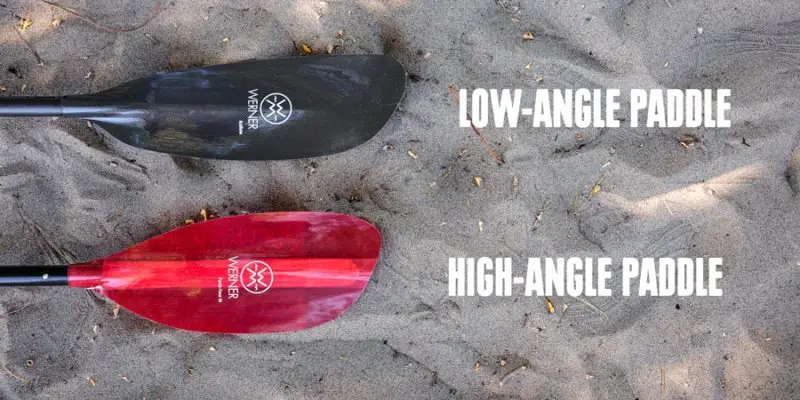
A mix of complementing materials makes fiberglass reinforced polypropylene pails. Polypropylene helps them retain their durability. The fiberglass reduces the weight of the paddle blade. But, fiberglass stiffens it. This means that the kayak paddle lengths are more efficient and have less flex. For those who plan to spend long days on the water or want to travel farther, fiberglass reinforced polypropylene may be the best option. Carlisle’s and Mercer’s are good choices. Magic Mystic Carlisle’s Magic Plus.
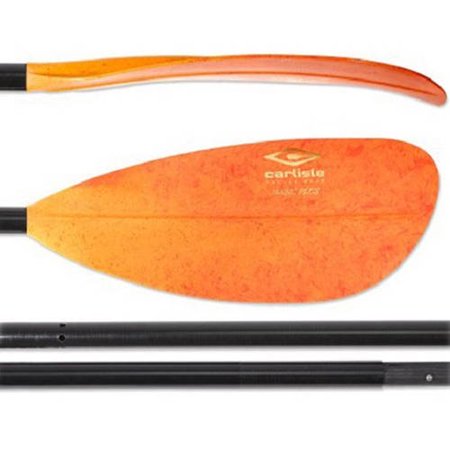
Carbon blades are composed of the highest quality materials. These blades have the best durability and are lightweight. Don’t skimp on it if you like paddleboarding and spending a lot of time on the water. Also, if you have wrist or shoulder problems, these paddles would be a great investment. The Old Town Casco Carbon blade is a great choice with a carbon/kevlar shaft. It is lightweight and stiff, so it can be used for very effective paddling.
KAYAK PADDLE SHAFT MATERIAL
As with paddle blades, paddle shafts come in many different materials. The most common options for paddle shafts are aluminum and fiberglass. High-end models use carbon blades.
A kayak paddle shaft made of aluminum is very affordable. Aluminum paddle shafts generally come in the lowest price range. They are also strong. You will find many outfitters offering aluminum shaft paddles to rent. Aluminum shaft paddles are inexpensive and can handle heavy usage. Aluminum shafts are a great option for those who value cost.
Fiberglass shafts are lightweight, strong, and flexible. They are lighter than carbon blade shafts and are durable. They offer a great balance between performance and affordability and are durable enough to last you through your growing kayaking skills. Casco Fiberglass paddles offer great value for money, while still delivering excellent performance.
The main advantage of a carbon shaft is its weight. You get the lightest combination of weight and carbon blade. A carbon blade is worth the investment if you spend much time on the water. A carbon paddle is a great way to reduce soreness and fatigue after a long day of paddling.
What King of Kayaking do you practice?
Recreational kayak paddles
Recreational kayaks are larger, more stable kayaks that can be used on lakes and rivers. You will need a longer kayak paddle to reach the water comfortably due to the width of recreational kayaks.
You can choose from fiberglass-reinforced or polypropylene blades if you’re a recreational kayaker. Carbon blade shapes can be symmetrical, elongated, or asymmetrical. Recreational kayakers can choose between aluminum and fiberglass shafts.
Old Town is home to some of the most popular options for recreational paddling.
Fishing kayak paddles – high rowing angle
Fishing kayaks offer a solid platform and are typically the longest kayaks. You can raise the seat to enhance visibility and castability. Kayak fishing requires a longer kayak paddle. This is why you’ll need to have a length of between 230-260cm [90-102 inches].
Strong, lightweight paddles are essential to chase trophy fish or lug your fishing gear around. A fiberglass shaft with fiberglass-polypropylene blades, such as Carlisle’s Predator Angler Paddle Would is a good choice. Predator Angler is asymmetrically shaped and produces smooth strokes. It has a notch that can be used as a hook retriever. So, if you do manage to grab a branch, your eight-foot paddle will still be useful. The Predator Angler and other fishing kayak paddle options are available.
Touring kayak paddles – low-angle paddling
Touring kayakers will use the narrowest kayaks of all three types. Touring kayakers will often look for a kayak paddle to help them cover some distance.
Touring kayaks let you choose whether to feathered paddle with your arms at a high angle or low angle. If you prefer a more vertical, high position for your touring paddle, then stick to the shorter end. If you prefer a more relaxed and horizontal paddle position, go for the longer paddle length. A touring paddle should measure between 210 to 230 cm (82-90 inches).
Such as this one are made from fiberglass-reinforced polypropylene knives Carlisle Magic Plus. This will give you the functional performance that you desire. Carlisle Magic Plus features asymmetrical fiberglass blades which provide smooth, efficient strokes.
Conclusion
You can test out kayak paddles on the water if you’re not sure what kind of kayak paddle you prefer. Check with your local paddling shop to see if there are any demos available or if you can find testing events for gear and paddles. Try the paddle first, if possible. This is where you need to hold your kayak paddle. After you have been in the boat, you should check if the paddle can reach the water. Pay attention to whether the paddle is stable near your kayak or if it is too far from your boat. Check out this article for more information about proper paddle techniques.
FAQ
A beginner’s guide to choosing the right kayak paddle?
Your height and kayak width will have a significant impact on choosing the right size kayak paddle. A longer paddle would be easier to handle on a wider boat. If you’re a tall paddler, you may also want to choose longer paddles, even if your kayak is narrow.
What is the maximum length of a kayak paddle?
You’ll end up overexerting yourself and working harder than necessary if you use a paddle that’s too long or too short. It is possible to develop blisters on the hands if the shaft is too long.
Do kayak paddles float?
The paddles of all kayaks float. … Paddles in kayaks float, but they usually float at a slower pace than a kayak. You will witness your kayak and yourself drift away helplessly if you drop your paddle into the water.
How much do kayak paddles cost?
A kayak paddle can cost between $40 and $500. Most paddle prices are determined by the blade material, but shaft material can play a role as well. Aluminum paddles with fiberglass blades are the cheapest available and cost about $40.
Our best posts:
